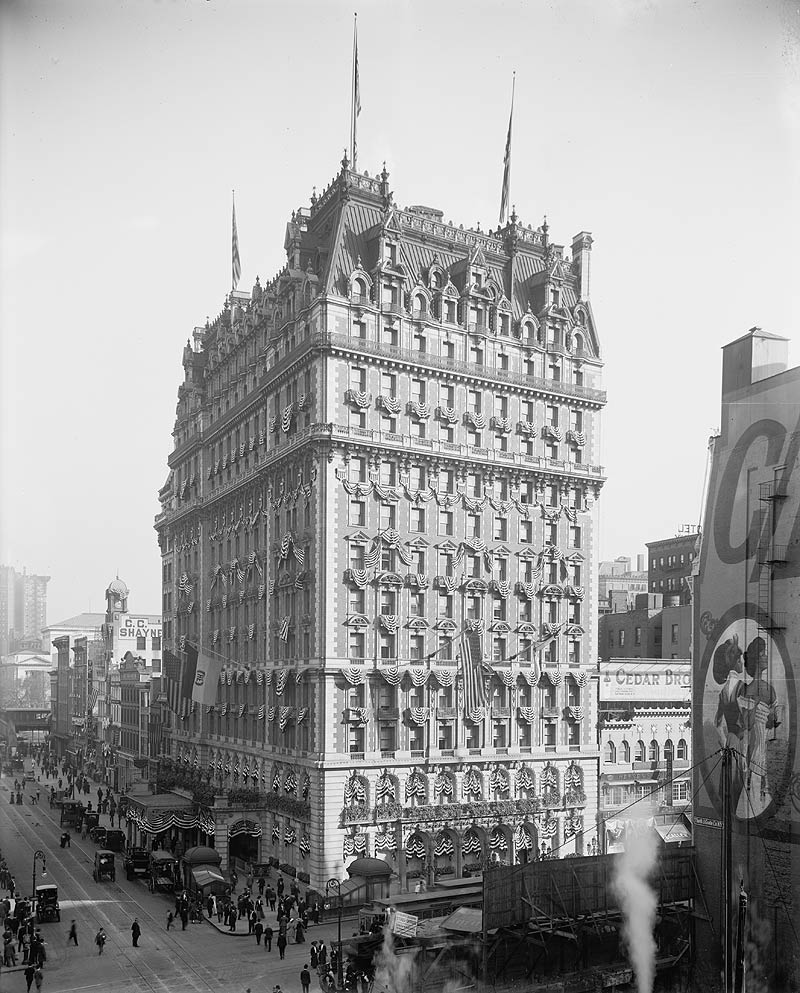1. Knickerbocker Hotel
 The Knickerbocker Hotel has returned to use as hotel in Times Square. Photo from Library of Congress
The Knickerbocker Hotel has returned to use as hotel in Times Square. Photo from Library of Congress
On November 7, 1918, it was erroneously reported the war had ended. The public went wild until the truth came out later that afternoon, and the date has become known as the False Armistice. At the time, Enrico Caruso, the most famous tenor in the country, was living in the Knickerbocker Hotel on Forty-Second Street and Broadway. Caruso spontaneously stepped out onto the Knickerbocker’s second floor terrace and performed “The Star-Spangled Banner” for the happy revelers in Times Square cheering the end of the war.
The day the Armistice was actually signed, November 11, was opening night at the opera house. Caruso appeared onstage as scheduled, and the audience went mad. So he gave the crowd a bonus: During the intermissions, the curtain went up and the cast performed all the patriotic songs of the Allies. Millionaire real estate scion John Jacob Astor IV built the lavish fifteen-story luxury Hotel Knickerbocker in 1906. It was a victim of the Depression and was converted to an office building in 1920, forcing Caruso to move out. After a multimillion-dollar renovation, the Knickerbocker resumed life as a luxury hotel in 2015.
Get the book World War I New York: A Guide to the City’s Enduring Ties to the Great War





